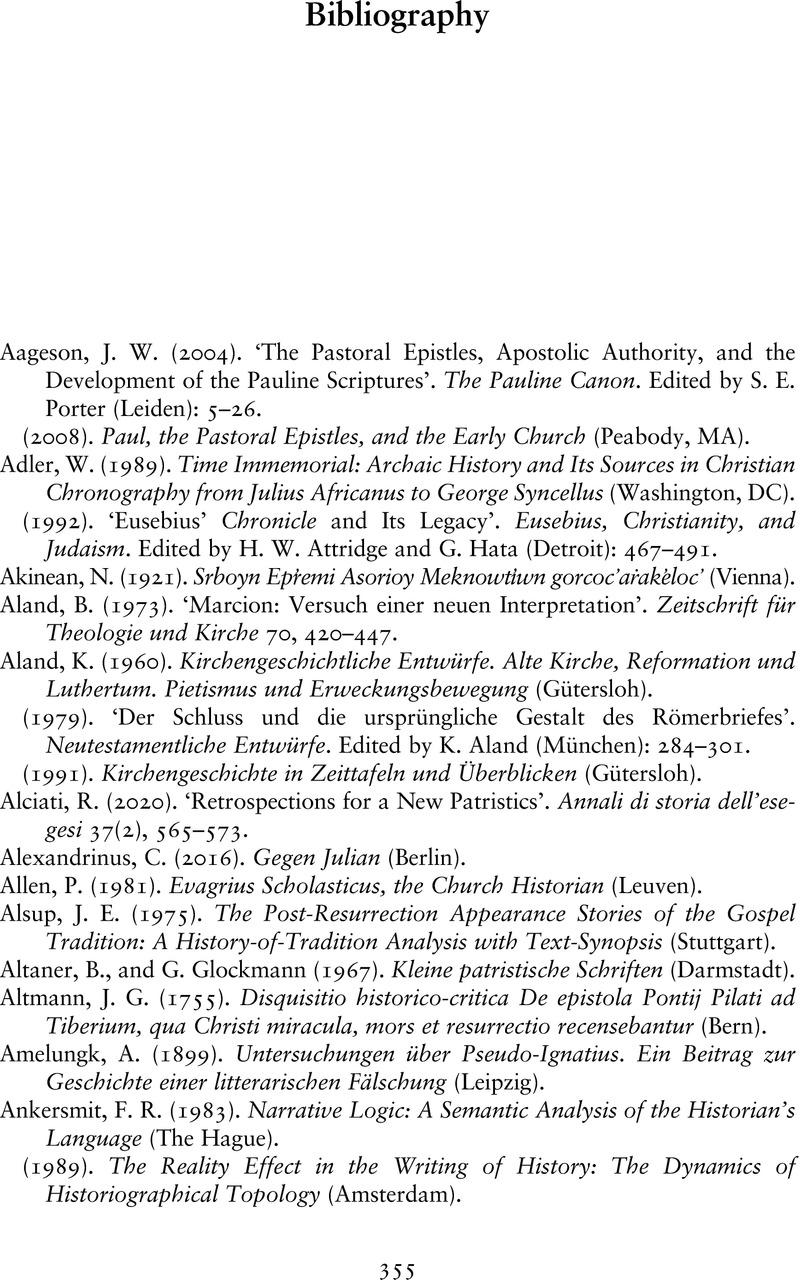Book contents
- Resetting the Origins of Christianity
- Resetting the Origins of Christianity
- Copyright page
- Contents
- Preface
- Beginnings
- 1 The Romans, Christ and Paul
- 2 ‘The Older, the Better’
- 3 The Apostolic and Prophetic Church according to Iulius Africanus, Origen and Tertullian
- 4 Scriptures and Tradition in Irenaeus and the Canonical New Testament
- 5 The Twelve Apostles
- 6 Traditions of Paul and the Ignatian Letters
- Outlook
- Appendix
- Bibliography
- Index
- References
Bibliography
Published online by Cambridge University Press: 30 December 2022
- Resetting the Origins of Christianity
- Resetting the Origins of Christianity
- Copyright page
- Contents
- Preface
- Beginnings
- 1 The Romans, Christ and Paul
- 2 ‘The Older, the Better’
- 3 The Apostolic and Prophetic Church according to Iulius Africanus, Origen and Tertullian
- 4 Scriptures and Tradition in Irenaeus and the Canonical New Testament
- 5 The Twelve Apostles
- 6 Traditions of Paul and the Ignatian Letters
- Outlook
- Appendix
- Bibliography
- Index
- References
Summary

- Type
- Chapter
- Information
- Resetting the Origins of ChristianityA New Theory of Sources and Beginnings, pp. 355 - 389Publisher: Cambridge University PressPrint publication year: 2023



